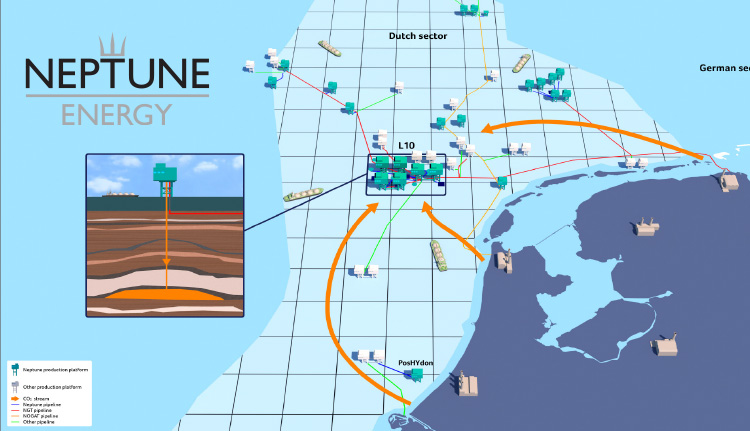Our global portfolio is gas-weighted and has a significantly lower carbon and methane intensity than the industry average. That is especially important, as geopolitical instability highlights the need for more domestic production to support energy security, while the drive to decarbonize energy production and consumption gathers pace.
Neptune Energy supports the goals of the Paris Agreement, and the net zero targets set by governments around the world. While these goals look to 2050, we are focusing on what we can do in the short to medium term, recognizing that actions in the next 10 years will be crucial in curbing global temperature rises.
Earlier this year, we announced our goal to store more carbon than is emitted from our operations, and from the use of our sold products by 2030. It is an ambitious strategy, and it is fully aligned with the ambitions of COP26. Importantly, it also acknowledges that gas will continue to play a major role for many years to come, underpinning energy security.
The strategy has two key pillars: producing lower carbon energy and developing integrated energy hubs.
First, we will produce lower carbon gas and oil by focusing on electrification of producing assets where it is efficient and economic to do so and by continuing to reduce emissions from our operated assets.
Producing gas and oil continues to be the mainstay of Neptune’s business, and we will target production in our key producing regions – maintaining our gas-weighted portfolio – while lowering carbon intensity. And we will prioritize new gas and oil developments where they are consistent with our lower carbon strategy, along with those that provide opportunities to integrate multiple energy systems.
By the end of this year, more than 35 kboepd of Neptune’s net annual production will be electrified and, with further projects planned in Norway, we aim to have around 50 kboepd electrified by 2027.
The second pillar of the strategy involves using our existing oil and gas infrastructure and capabilities to integrate energy systems. This integrated energy hub strategy provides an opportunity to drive offshore decarbonisation by extending the life of our producing assets, and repurposing them for CO2 storage and hydrogen production, using domestic, lower carbon intensive gas or wind power.
Linking back to the first strategy pillar, we recognise that extending the life of our operating fields can also support the economics for electrification, helping decarbonise our existing production even further.
Naturally, Carbon Capture and Storage (CCS) will play a major role in our strategy, just as it does in supporting the global energy transition. And it is an area that Neptune knows well.
We are building on the significant experience gained with CCS in the Norwegian and Dutch North Sea. In Norway, we partner on the Snøhvit field which has been reinjecting CO2 since 2008. And in the Dutch sector, we participated in a 14-year program to reinject CO2 from a well into a producing gas field, saving more than 100,000 tonnes of CO2 overall.
Today, we and our partners are developing the L10 CCS project in the Netherlands, which could store up to 5mt of carbon per year. We intend to have the project FEED-ready by the end of this year, followed by the submission of a storage licence application.
We have also begun developing the Errai CCS project in Norway with Horisont Energi. Errai could store 4-8 million tonnes of CO2 annually, with the potential to store more in later phases. The project includes an onshore terminal for intermediate CO2 storage, with the intention to permanently store the CO2 in an offshore reservoir.
The onshore terminal would be capable of receiving CO2 from European and domestic customers, including from the planned CO2 terminal at the Port of Rotterdam. Several onshore locations in Southern Norway are being evaluated for the terminal.
Meeting the world’s current and future energy needs – while also driving decarbonization of energy systems – will require significant investment in a diverse range of low-carbon projects as well as traditional oil and gas developments.
Our sector is ideally placed to do so.
We can play a valuable, meaningful role as the world accelerates into the energy transition. We have a highly-skilled workforce with unrivaled project and engineering skills, robust global supply chains, and cutting-edge technology capabilities.








